New England Forestry Foundation (NEFF) has launched a new blog series, Notes From the Field, to bring nature to you at a time when many people are sheltering at home. When it is safe to do so, staff members will offer a behind-the-scenes look at their current work and document interesting natural phenomena from forestlands protected by NEFF. We will also share retrospective stories. Enjoy this inaugural post by NEFF Stewardship Associate Beth Gula, who has provided photo-heavy accounts of her recent work and an exciting past wildlife sighting.
During the first month of spring, NEFF’s land stewardship department usually ramps up field-based work; in the midst of the coronavirus pandemic, however, we’ve instead been scaling back in order to keep ourselves and the public safe. Limiting travel distance, as well as close contact with others and the potential for injury, has meant that we are sticking closer to home, just like we recommend NEFF Community Forest visitors do.
I picked a sunny, warm day this week to head over to Rocky Pond Community Forest, a NEFF property in Boylston, MA, just a few exits south off I-495 from our office. My task was to GPS trails to improve our property maps and assess conditions after the previous days’ wind storm. Associated perks of the job included enjoying the fresh air and scenic views of the pond, and finding signs of the forest waking up after winter dormancy.

Rock tripe, a large disc-shaped lichen, covers many of the huge boulders scattered across the landscape.
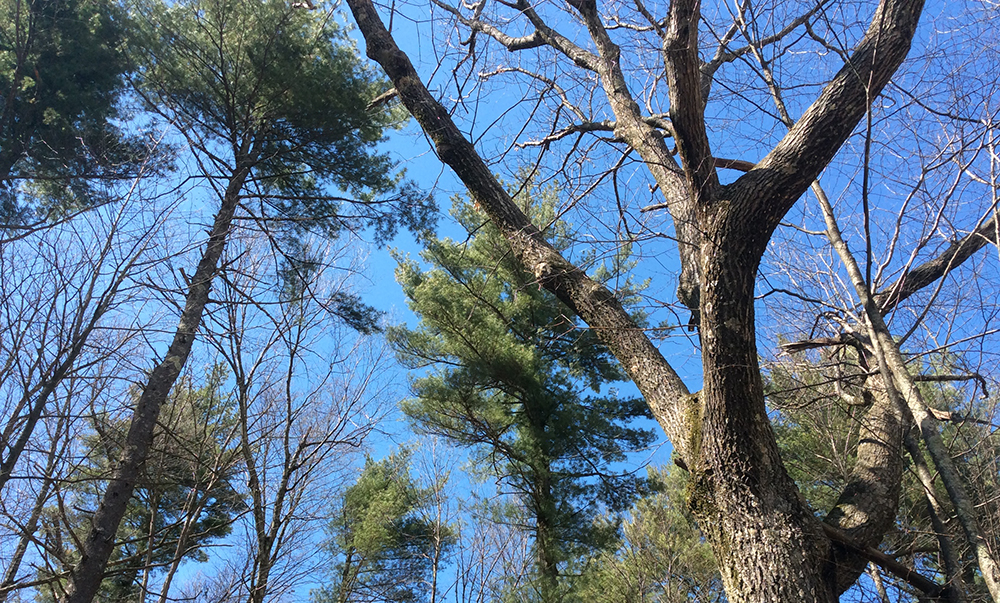
Looking into the canopy on a blue-sky day. White pine and mixed oak are typical in the Rocky Pond forest.

Trees are marked in blue paint in advance of a planned shelterwood-seed tree harvest north of the pond to promote forest regeneration.
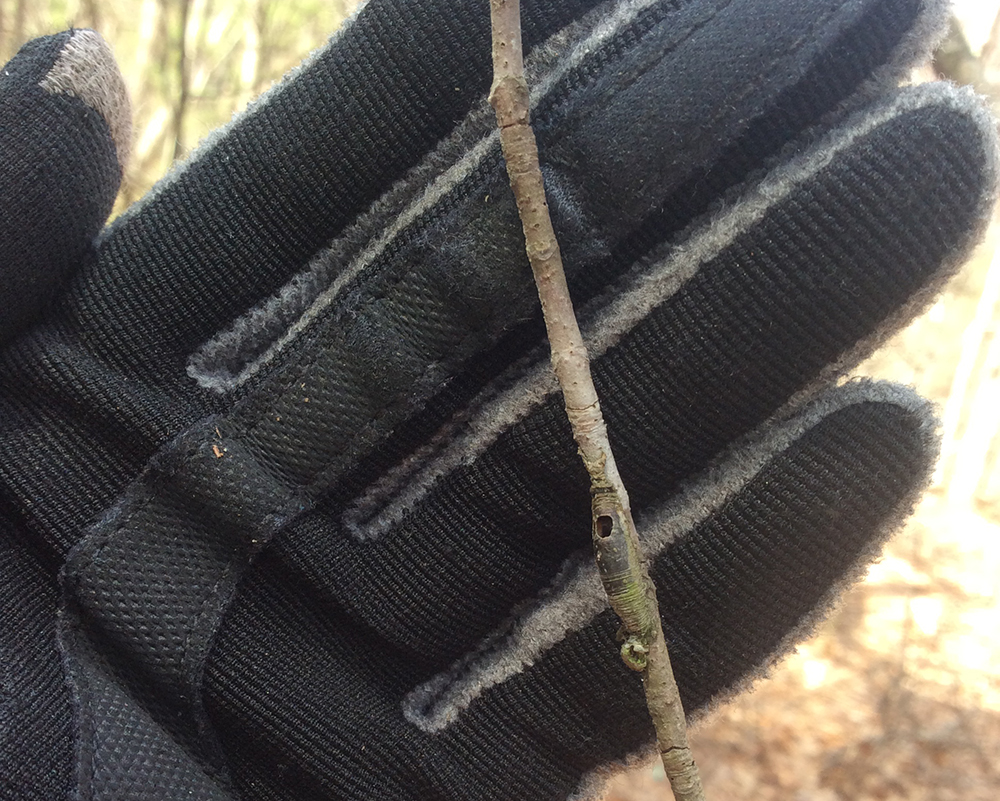
Some insect emerged from this well-camouflaged case, not sure what!
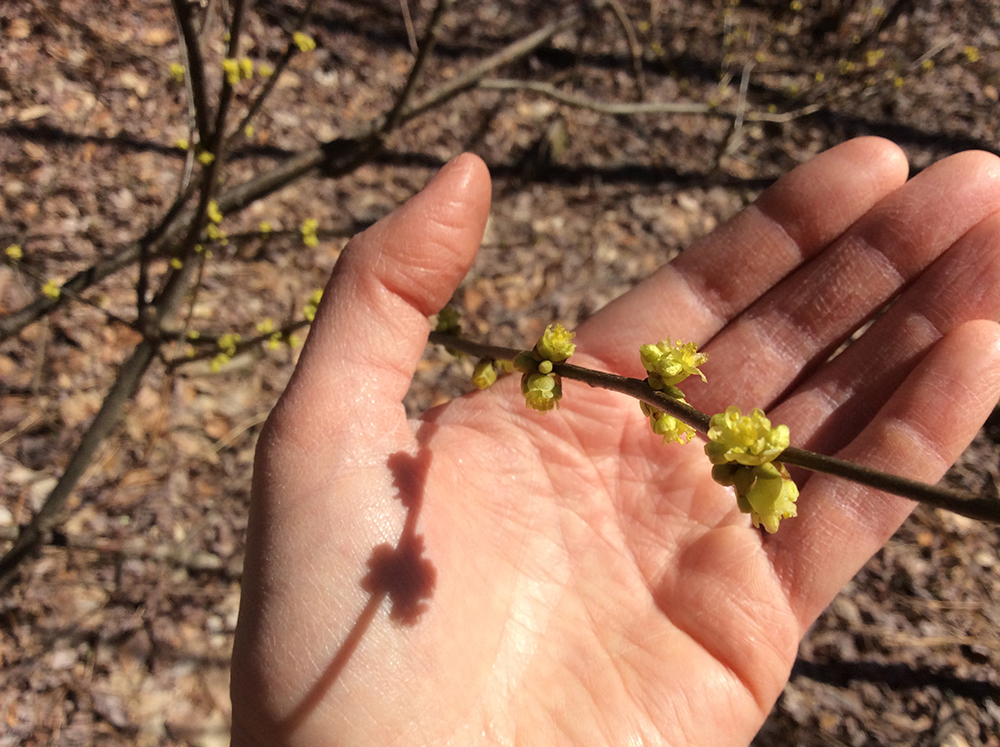
Spicebush (Lindera bensoin) is one of the few plants I saw flowering this early in the season. There was a group of these shrubs where the trail crosses a low, wet area just north of the pond. Red fruit will mature out of these small flower clusters. It’s also known as “wild allspice,” named for aromatic leaves, fruit, and twigs.

Bits of acorn left in this bird nest by the pond edge, evidence that a mouse found shelter here over the winter.
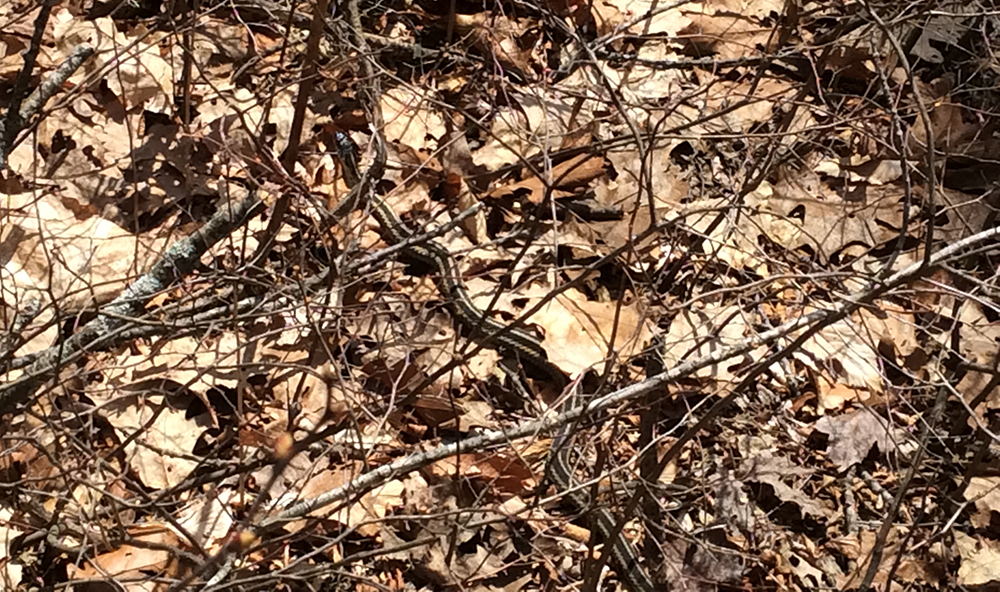
Me and more than a few garter snakes startled each other throughout the day. They’re harder to spot when they’re still, like in this photo.
Bonus: A Look Back at a 2019 Wildlife Sighting
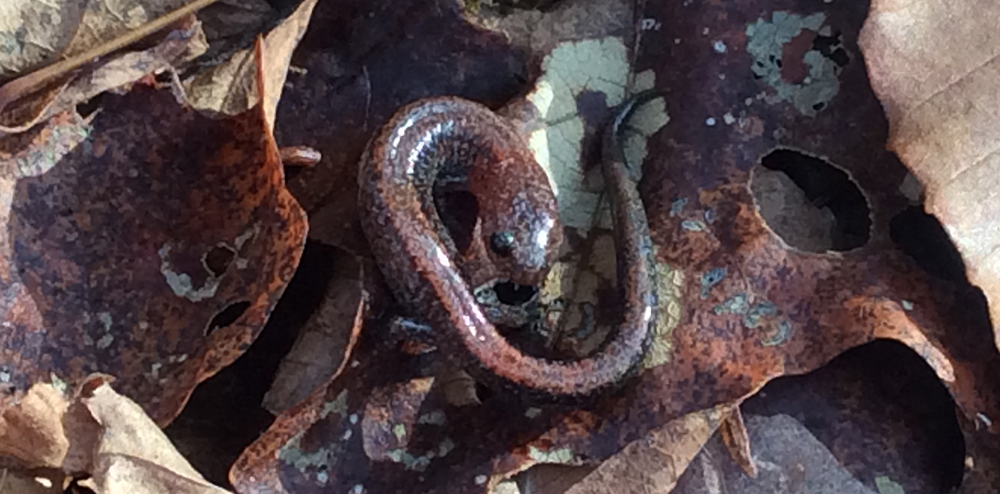
I crossed paths with this little amphibian on a conservation easement in northern New Hampshire in October 2019. Walking an old overgrown skid trail, I noticed half of an old wasp nest, relatively intact, on the ground. Interested in looking closer at the nest construction, I flipped it over and found this salamander! I watched for a bit then placed the nest back where I found it.
New Hampshire Fish and Game notes: “Some scientists have reported that Redback salamanders are New Hampshire’s most abundant forest vertebrate in terms of overall biomass in the forest (weight of all redback salamanders combined greater than any other species). If you turn over a number of rotting logs in moist woodlands there’s a good chance you will find a redback salamander. Always make sure to replace logs in the position that they were first found.”*
Redback salamanders can appear either “redbacked,” like their name, or darker in a “leadback” phase.
*wildlife.state.nh.us/wildlife/profiles/redback-salamander.html
Stay tuned for more notes from the field!
